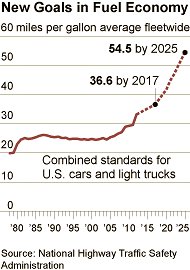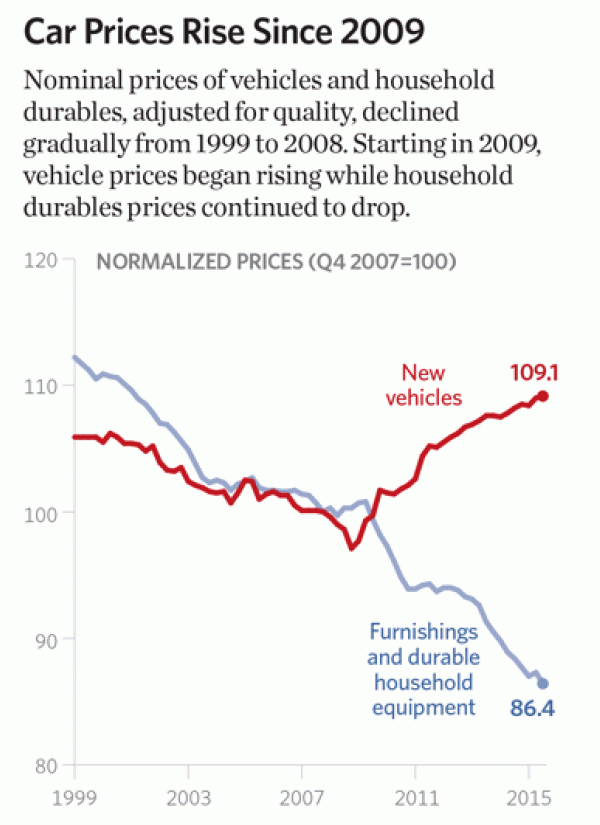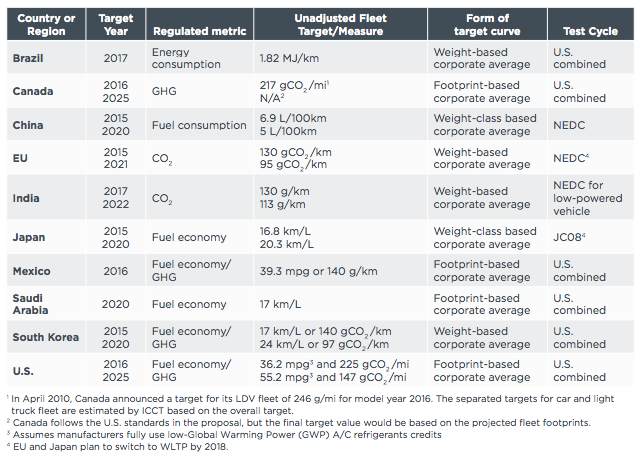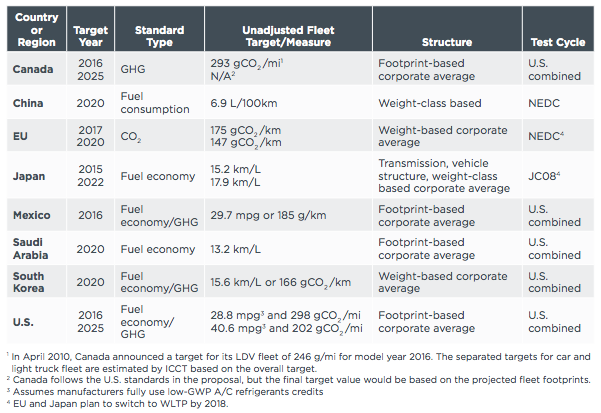Among the many regulatory policies that the Obama administration imposed on American industry was the near doubling of the mandated average fuel economy for passenger vehicles to 54.5 miles per gallon by 2025. While one may think that higher fuel efficiency is a good thing, its negatives include increased prices, decreased safety, and decreased mobility due to a lack of electric vehicle infrastructure.
Further, it puts U.S. automakers in a bind where they are forced to manufacture automobiles U.S. consumers do not want. U.S. consumers are purchasing more SUVs and pick-ups and fewer small efficient cars, making it more difficult to reach the sales necessary to satisfy the mandate. If the standard is not met, automakers have to pay fines. The fines, in addition to having retail sale lots full of unwanted new vehicles, could push the U.S. auto industry into financial trouble once again, as well as drive up consumer costs for vehicles they choose to purchase.
Trump’s EPA, under Administrator Pruitt, has announced a roll-back of the Obama standards for model years 2022 to 2025. They will revise the targets so that consumers can choose which vehicles they want to buy regardless of gas mileage, based on their individual wants and needs.
Obama’s Fuel Efficiency Standard
Corporate average fuel economy (CAFE) standards were first introduced in the 1970s to reduce gas consumption due to gasoline shortages. The standard remained at 27.5 miles per gallon for many years, but in 2012, Obama’s EPA mandated a fleet wide average of 54.5 miles per gallon by 2025 with a midpoint review in 2017. But once President Trump was elected, Obama’s EPA performed a quick review and upheld the 2012 targets despite economic and technological obstacles that the U.S. auto industry faces. The standards were finalized on January 12, 2017, a week before President Obama left office.

In 2012, when gasoline averaged $3.60 a gallon, passenger cars were about half of vehicle sales. Passenger cars’ share of the market, however, has been declining amid low gasoline prices and last year, they made up only about a third of the fleet. This trend as well as the fact that less than one percent of gas-burning vehicles could meet the 2022 target indicates that it would be almost impossible to meet the 2025 standard.
To meet the intermediary targets, automakers have sold small and electric cars at a loss, and/or shifted production to Mexico, where the cost of production is lower. Fiat Chrysler, for example, estimated that it loses $14,000 on each Fiat 500e. This means that buyers of trucks and SUVs pay much more to make up the losses for the company.
In 2016, most manufacturers complied with the standards by using regulatory credits that the Obama EPA provided for efficient air-conditioning systems, electric cars and flex-fuel vehicles that can run on ethanol. These regulatory credits can be stored for later use and/or traded. In that model year, Fiat Chrysler bought 21.9 million credits while Honda sold 20.7 million credits. This credit scheme is a subsidization where SUV and truck consumers indirectly subsidize electric and small car consumers, which generally means rural and suburban residents subsidize city residents.
Vehicle Cost and Safety
New car prices fell rapidly in the 1990s and the 2000s until the Obama Administration imposed the strict fuel economy standards. Since then, new car prices have dramatically increased. Since 2009, the price of the average car rose to $6,200 above the previous trend. (See chart below.) A study by the Heritage Foundation found that regulations that force ever-increasing automobile fuel economy standards cost consumers thousands of dollars more than savings from using less gasoline. Obama’s new standards were estimated to add at least $3,800 to the cost of a car in 2016 and at least $7,200 in 2025 after adjusting for gasoline savings, shutting out almost seven million people from the new car market. At higher vehicle prices, consumers demand fewer vehicles, and automakers hire fewer workers.

In order to meet fuel economy standards, cars have to be made smaller and lighter, making them less crashworthy. A 1989 Harvard-Brookings study estimated the death toll at between 2,200 and 3,900 a year for the earlier CAFE standard of 27.5 miles per gallon. Similarly, a 2002 National Academy of Sciences study estimated that CAFE at 27.5 miles per gallon had contributed to up to 2,600 fatalities in 1993. The Insurance Institute for Highway Safety, which closely monitors crashworthiness, states: “Bigger, heavier vehicles are safer,” which is precisely why consumers are purchasing SUVs and light duty pick-ups.
Obama’s Standard Has U.S. Fuel Economy Approaching European Standards
According to an analysis by the International Center on Clean Transportation, which compared standards for different countries, the Obama Administration standards on fuel economy would be some of the most aggressive in the world by 2025 and rival those of the European Union. (The charts below break out standards for cars and light trucks separately.)
Fuel Economy Standards for Passenger Cars

Larger SUVs and light trucks face less stringent standards than smaller passenger cars.
Fuel Economy Standards for Light Trucks

If automakers complied with the rules solely by improving the fuel economy of their engines, new cars and light trucks on the road would average more than 50 miles per gallon by 2025. Since automakers in the United States can get credit for using specified refrigerants in vehicle air-conditioning units or by selling more electric vehicles, it is expected that new cars and light trucks sold in the United States would average about 36 miles per gallon on the road by 2025 under the Obama Administration CAFE standard—up from about 24.7 miles per gallon in 2016.
SUVs and light trucks make up a far larger proportion of new vehicle sales in the United States than they do in Europe. In the United States, light trucks make up 45 percent of the market compared to about half that in the European Union (24 percent).
Conclusion
Despite automakers arguing that the fuel economy standard was onerous, forcing them to invest heavily in building hybrid and electric vehicles, the Obama Administration pressed on with its favorable review and lock-in of the standard. That took the review away from the incoming Trump Administration and forced Administrator Pruitt to roll back the standard to ensure that automakers are being treated fairly and that the American public can still have a choice in it vehicle purchases without giving up safety, quality, capability and price.



